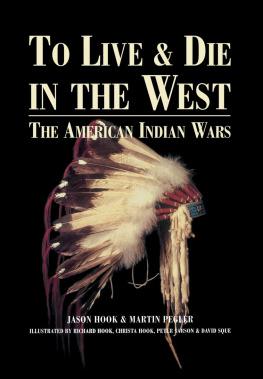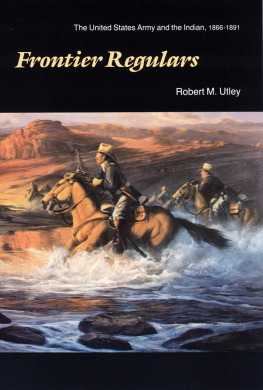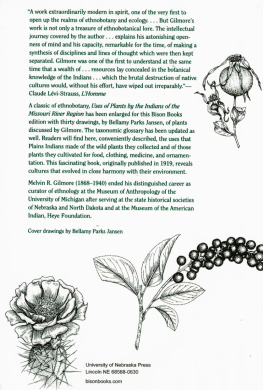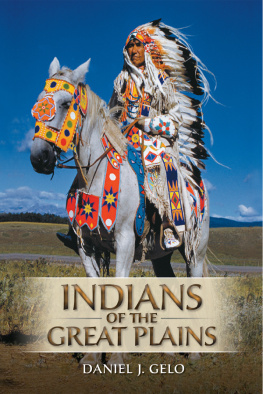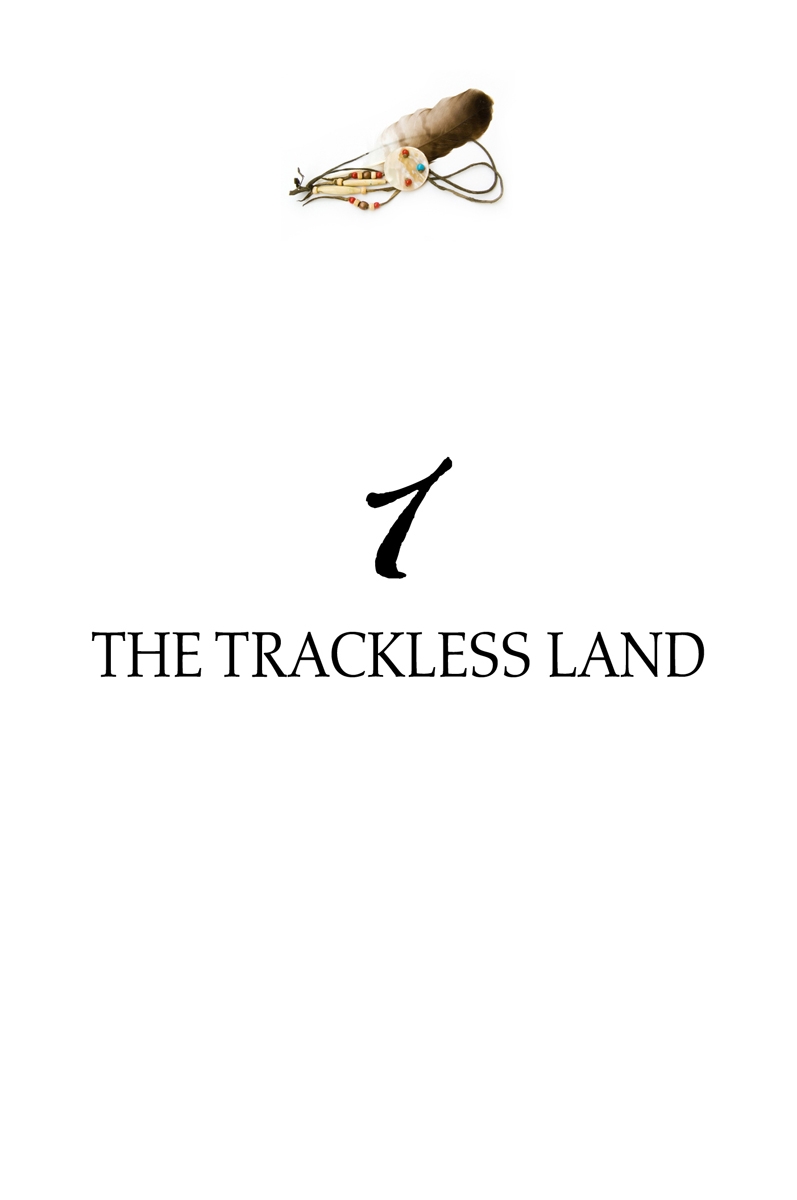In awe and fear, the army of Francisco Vsquez de Coronado moved slowly across the flat, dry land. Ahead, the earth seemed to stretch to the sky itself. Behind, some of the men grimly noted, the grass over which they traveled did not lie flat, but sprang instantly erect, as if no one had ever passed over it.
There was no trail ahead, and none behind - nothing but a seemingly eternal emptiness on all sides. The flatness, with the horizon visible in every direction, was overpowering. It was like living in a bowl, one of Coronados men said, or as if a man should imagine himself in a three-pint measure, and could see the sky at the edge of it, about a crossbow shot from him. And that sky could be treacherous, too, the men learned, as they marched in searing sun and gritty wind. Sometimes pelting hail dented their heavy Spanish armor. Only the Indians and the buffalo they passed seemed at home in this strange world.
These were the Great Plains in 1541, the year they were crossed by the Spanish explorer, Coronado, and his men. They were the first Europeans to see that limitless land and the Indians who lived upon it.
Coronados army was a strange collection of men and animals, and it must have seemed a frightening vision to the Indians. There were more than 200 men on horseback: Horses were so totally new to the Indians that they thought rider and horse were a single animal. The mounted Spaniards in full fighting gear - in mail or in gilded armor which threw back the suns rays, wearing visored iron helmets and carrying long lances - terrified the nearly naked Indians they met along their route.
As if the cavalry were not enough, there were also about sixty armed men afoot, 1000 Mexican Indians, 300 extra horses, 500 head of cattle, 5,000 sheep, and 600 pack mules.
Not even dreams could have prepared the Indians for such a procession. The Plains Indians who first saw and were frightened by Coronados horsemen were wanderers. The only other humans in their experience would have been other Indians - nomads like themselves, or farmers. Coronados men said the Indians he met lived like Arabs.
The Indians were Querechos and Teyas, probably the ancestors of the Plains Apaches. They wandered on foot, following the huge buffalo herds which could keep whole tribes in food and clothing for months. In the winter, they traveled to the pueblo villages of what is now New Mexico or to the grass-thatched villages of present-day Kansas to trade buffalo robes for corn.
The Querechos and Teyas were large, well-built people. They painted their faces and bodies and used buffalo skins for clothing and footwear. They lived in skin tents, similar to the tepees which came later, although much smaller. They were skilled in sign language. They practiced a religion which was a form of sun worship.
Their few belongings were packed on a dogs back or hauled by a dog on a primitive carrier, now called the travois. This is a French word for a device which consisted of two poles and crossbars formed in the shape of the letter A.
The pointed end was tied around the dogs back while the legs of the travois were allowed to drag behind. Goods - buffalo meat, tepee skins and poles, extra clothes - were lashed to the crossbars which were made of wood or rawhide. In this manner, Plains Indian dogs could haul forty or more pounds of gear as far as five or six miles a day.
The Indians, traveling on foot, found all too often that the vast herds of buffalo remained out of reach. And despite their hunters skill with bow and arrow and lance, there was not enough meat to eat for most of the year.
Coronados expedition had not been sent out to make history. He and his men had come only for gold and jewels. Somewhere in this land were treasures so vast, they had heard, that there would be enough for each soldier to spend his days as a grandee, without ever marching again under such a bitter sky.
There had been one terrible disappointment already. The Seven Cities of Cibola, which were supposed to hold fabulous wealth, had turned out to be poor Indian pueblos made of clay. There were no rich harvests; no gold, nor silver nor silks. Instead of gold, there had been intense fighting. Some Spanish dead had been left behind among the Indian dead, and of those marching on, many carried battle wounds.
Now they were heading for still a new goal, a city called Quivira. It had been described to them in such wondrous, yet such exact terms, that none doubted its existence or its gold. In Quivira, they had been told, the trees were hung with tinkling golden bells, and pitchers and bowls and dishes were made of solid silver and gold. The man who told them of Quivira, an Indian called El Turco (the Turk - because his headdress resembled a turban) was acting as their guide. With the Turk walking beside Coronado, at the head of the army, Quivira would soon be found. Somewhere short of the distant horizon, they would reach that city, and its golden treasures would reward them for their hardships.
But there was to be no reward. The Great Plains were too much for these early intruders. Soldiers hunting for buffalo left no trail on the ground. The men could not find their way back to camp. Horses wandered off across the prairie and were never seen again.
When it became clear to Coronado that his army could move no faster than its slowest animals, he had to split his forces. Most of the soldiers, Indians, and animals were ordered to turn back. Coronado proceeded to Quivira with a handful of cavalry and infantrymen, living off the buffalo they found.
This smaller party was able to move faster, and at last, it came to Quivira. There they found nothing but a group of Indian villages somewhere near what is now Dodge City, Kansas. The houses were thatched with grass. The Indians were farmers tilling the soil for squash, beans, and corn.
The Spanish could see at once that this was not the golden Quivira described by the Turk. The nearest thing to gold they saw was a copper medallion worn by a chief. The Turk had invented the whole story as part of an Indian plan to lead Coronado and his men to their deaths on the Plains. For this treachery, the Turk was killed by Coronados officers.
In the spring of 1542, Coronado and his men retreated from the Great Plains, back to Mexico where the expedition had started. There was no gold at Cibola or Quivira, or anywhere else on the Plains. There was nothing but wasteland, fit only for Indians and buffalo.
Coronados men headed south and the grass behind them rose back in place, leaving no trace that these invaders had ever passed that way.
Indians and Prehistory
Perhaps 20,000 years ago, the first Indians began coming to North America from Siberia, by way of Alaska. From them, and from those who followed, descended all the varied tribes of North and South America.
When Columbus landed, in 1492, there were about 900,000 Indians living in what is now Canada and the United States. None of the Indians of North America used the wheel or kept any domestic animal except the dog. They had no alphabet and no knowledge of the use of iron. Their implements and weapons were made of bone, chipped stone, shell, and copper.
Archeologists have found remains of villages in the river valleys of the Plains, where Indians lived and tended their farms. But thousands of years before the first farmers appeared in the area, Plains Indians lived as nomads, or in caves. They hunted the ground sloth, the bison and the early wild horses and camels which roamed the broad prairies in the late Ice Age.
Both the wild horse and the camel became extinct long before the time of Columbus. But the bisons descendants prospered so well that, by the time of Coronado, there were probably more than 50,000,000 buffalo on the Plains.




